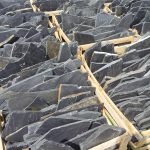Introduction
Moroccan cultured stone is a unique and exquisite form of art and architecture that has captivated people around the world for centuries. With its intricate designs, vibrant colors, and rich history, Moroccan cultured stone represents a blend of various cultural influences that have shaped the country's architectural landscape. In this article, we will explore the origins, characteristics, uses, and significance of Moroccan cultured stone, delving into the craftsmanship and artistry behind this timeless beauty.
Origins of Moroccan Cultured Stone
Moroccan cultured stone has its roots in the rich history and diverse cultural heritage of Morocco. The country's architectural style is a fusion of various influences, including Berber, Arab, Moorish, and European traditions. The intricate designs and patterns found in Moroccan cultured stone are a reflection of this diverse cultural tapestry, with each element contributing to the unique beauty and craftsmanship of the art form.
One of the key influences on Moroccan cultured stone is the Islamic architectural tradition, which has played a significant role in shaping the country's architectural landscape. Islamic art and architecture are characterized by geometric patterns, intricate carvings, and the extensive use of decorative elements such as calligraphy and arabesques. These elements are prominently featured in Moroccan cultured stone, giving it a distinct and recognizable aesthetic.
Characteristics of Moroccan Cultured Stone
Moroccan cultured stone is known for its vibrant colors, intricate designs, and exquisite craftsmanship. The stone itself is typically made from a combination of natural materials such as limestone, sandstone, and marble, which are carefully shaped and carved by skilled artisans to create stunning works of art. These stones are then adorned with colorful tiles, mosaics, and intricate carvings that add depth and dimension to the final piece.
One of the defining characteristics of Moroccan cultured stone is its use of geometric patterns and motifs. These patterns are often inspired by nature, Islamic art, and traditional Berber designs, and are meticulously incorporated into the stone to create a sense of harmony and balance. From intricate star patterns to interlocking geometric shapes, Moroccan cultured stone exudes a sense of precision and beauty that is truly captivating.
Uses of Moroccan Cultured Stone
Moroccan cultured stone has been used in a variety of architectural applications, from grand palaces and mosques to humble homes and public buildings. The versatility of the stone allows it to be used in a wide range of settings, adding a touch of elegance and sophistication to any space. In traditional Moroccan architecture, cultured stone is often used to adorn walls, floors, ceilings, and fountains, creating a sense of opulence and grandeur.
In addition to its use in architecture, Moroccan cultured stone is also popular in interior design and décor. From intricate wall panels and decorative screens to ornate furniture and lighting fixtures, the stone can be incorporated into a variety of design elements to add a touch of Moroccan flair to any space. Whether used as a focal point or as an accent piece, Moroccan cultured stone brings a sense of warmth and beauty to any interior setting.
Significance of Moroccan Cultured Stone
Moroccan cultured stone holds significant cultural and historical importance in the country, serving as a symbol of craftsmanship, tradition, and artistic expression. The art of creating cultured stone has been passed down through generations of artisans, who have honed their skills and techniques to produce works of unparalleled beauty and quality. These artisans play a crucial role in preserving Morocco's cultural heritage and ensuring that the tradition of cultured stone continues to thrive.
Beyond its cultural significance, Moroccan cultured stone also holds economic importance for the country. The art form has become a source of income for many artisans and craftsmen, providing them with employment opportunities and a means to support themselves and their families. By showcasing their skills and talents through the creation of cultured stone, these artisans contribute to the local economy and help sustain a tradition that has been a cornerstone of Moroccan culture for centuries.
Conclusion

Moroccan cultured stone is a testament to the rich history, cultural heritage, and artistic prowess of the Moroccan people. With Stepstone paver shapes for diverse options , vibrant colors, and exquisite craftsmanship, cultured stone has become a symbol of beauty, tradition, and creativity that continues to captivate people around the world. As a versatile and timeless art form, Moroccan cultured stone serves as a bridge between the past and the present, connecting generations of artisans and craftsmen in a shared legacy of creativity and artistry.
